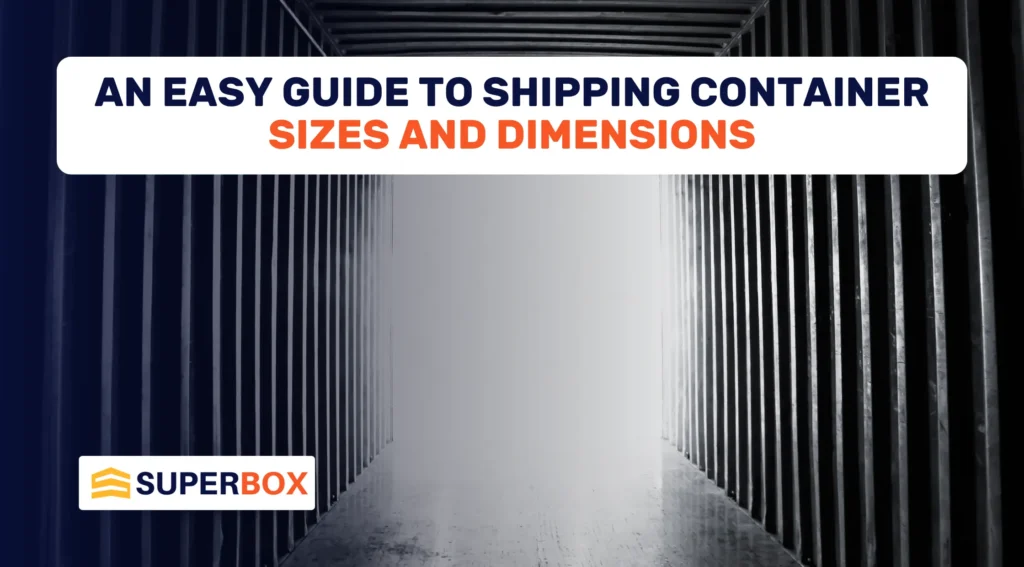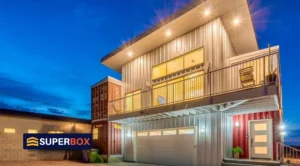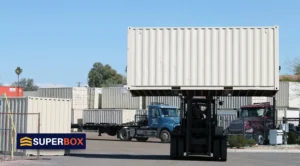Choosing the right container is key for shipping and storing items properly. Containers come in different sizes and types, each made for specific needs. Understanding the standard shipping container dimensions and sizes dimensions can help you choose the best one for your needs, whether it’s for moving items or storing them safely.
In this guide, we’ll explain the common container sizes, like the standard 20ft and 40ft, as well as high cube containers that offer extra height. We’ll also cover special types, such as open-top and flat rack containers, so you can find the best fit for your cargo. By knowing these details, you’ll be able to make smarter choices and ensure your shipping and storage are efficient and secure.
Standard Shipping Container Sizes and Dimensions
Standard shipping containers come in common sizes like 20ft and 40ft, designed for most cargo needs. Knowing these sizes helps ensure your shipments fit and travel efficiently.
Common Sizes: 20ft and 40ft
The most commonly used shipping container sizes are 20 feet and 40 feet. These sizes are preferred because they fit well with typical cargo loads and are designed for international shipping.
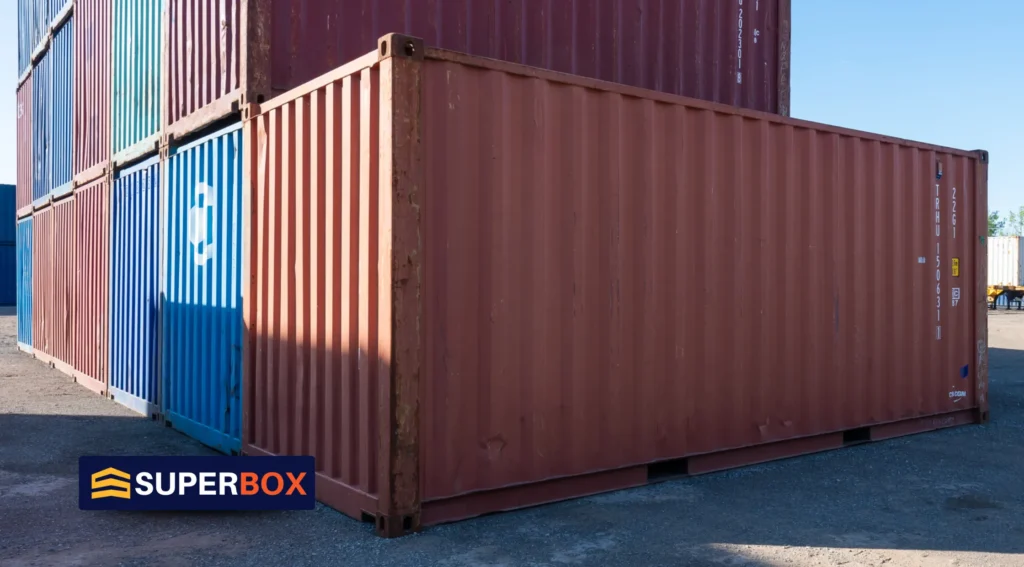
- External Dimensions: Approximately 20 feet long, 8 feet wide, and 8.5 feet high.
- Internal Dimensions: Slightly smaller, with a width of around 7.7 feet and a height of 7.9 feet.
- Gross Weight: Generally, up to 55,000 pounds (25,000 kg).
- Tare Weight: Around 4,800 pounds (2,200 kg).
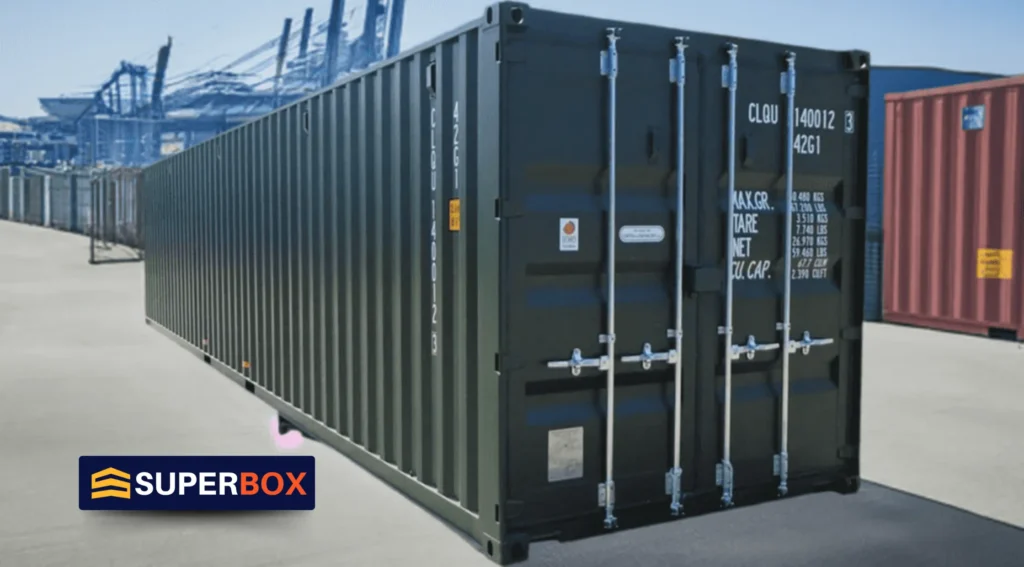
- External Dimensions: About 40 feet long, 8 feet wide, and 8.5 feet high.
- Internal Dimensions: Approximately 39.5 feet long, 7.7 feet wide, and 7.9 feet high.
- Gross Weight: Typically up to 67,200 pounds (30,480 kg).
- Tare Weight: Roughly 8,000 pounds (3,600 kg).
These sizes are standard and commonly used in cargo ships because of their efficiency and compatibility with international shipping systems.
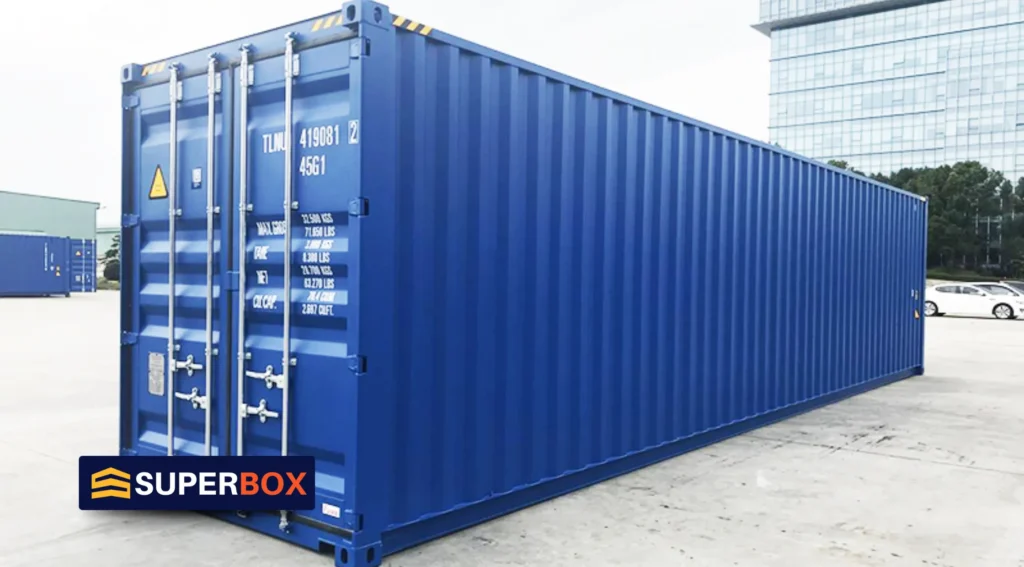
High Cube Shipping Containers
High cube containers are taller than standard ones, providing extra space for bulkier items. Here are the usual sizes:
What is a High Cube Container?
High cube containers are similar to standard containers but a foot taller than standard. This added space vertical space is perfect for taller or bulkier items, making them a versatile choice for various shipping and storage needs.
- 40ft High Cube Container:
- External Dimensions: 40 feet long, 8 feet wide, and 9.5 feet high.
- Internal Dimensions: About 39.5 feet long, 7.7 feet wide, and 8.9 feet high.
- Benefits: Provides an additional foot of height compared to standard containers, making it perfect for bulky or taller cargo.
- Gross Weight: Up to 67,200 pounds (30,480 kg).
- Tare Weight: Generally around 8,800 pounds (4,000 kg).
High cube containers offer more storage space and can accommodate items that are too tall for standard containers.
Specialty Containers
Specialty containers are designed for specific types of cargo and unique shipping needs. These include options such as open tops and flat racks, each specifically designed to handle loads that standard containers cannot accommodate.
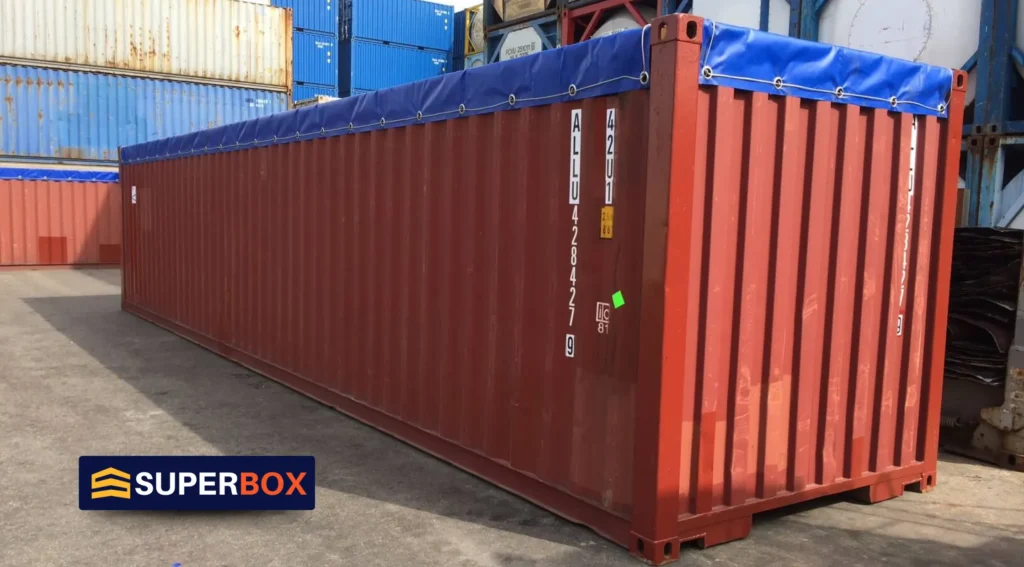
Open Top Containers
Open-top containers are designed with a removable top, allowing cargo to be loaded from above. They are useful for oversized items or cargo that need to be loaded with cranes.
- Dimensions: Similar to standard containers but with an openable top.
- Cargo Doors: Equipped with end doors for easy loading and unloading.
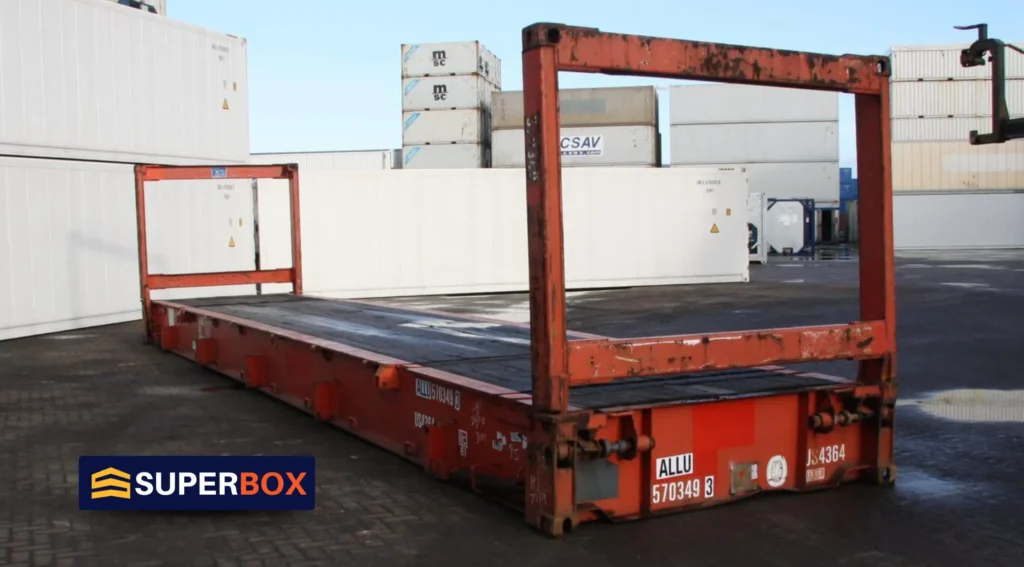
Flat racks have no sides or tops, making them suitable for heavy or large items that need to be loaded from the sides or top.
- Dimensions: Normal sizes are 20 feet or 40 feet long.
- Structural Integrity: Built to support heavy loads and withstand various conditions.
- Uses: Ideal for cargo that doesn’t fit in standard containers or requires side access.
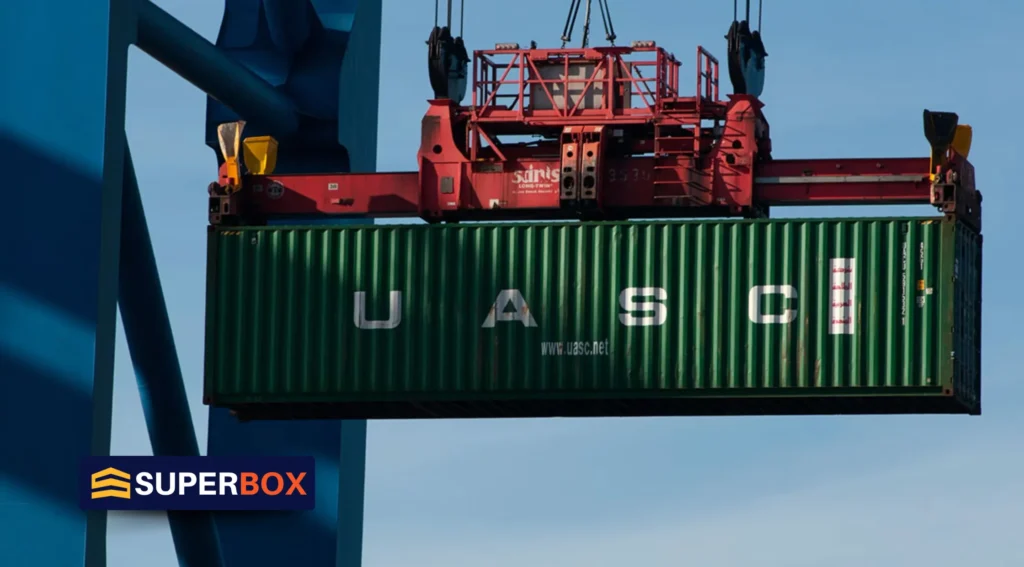
ISO Shipping Standards
ISO shipping standards set global rules for container sizes and dimensions, ensuring uniformity and compatibility across international transport systems.
The Role of ISO
The International Organization for Standardization (ISO) creates global rules for container sizes and dimensions. These rules make sure that containers are the same everywhere, so they work well with different transport systems around the world.
One key measurement is the Foot Equivalent Unit (FEU), which helps compare container sizes. Standardization ensures that containers fit correctly into cargo ships, trucks, and trains, making international shipping smoother and more efficient. Thanks to ISO standards, shipping goods across the globe is easier and more organized.
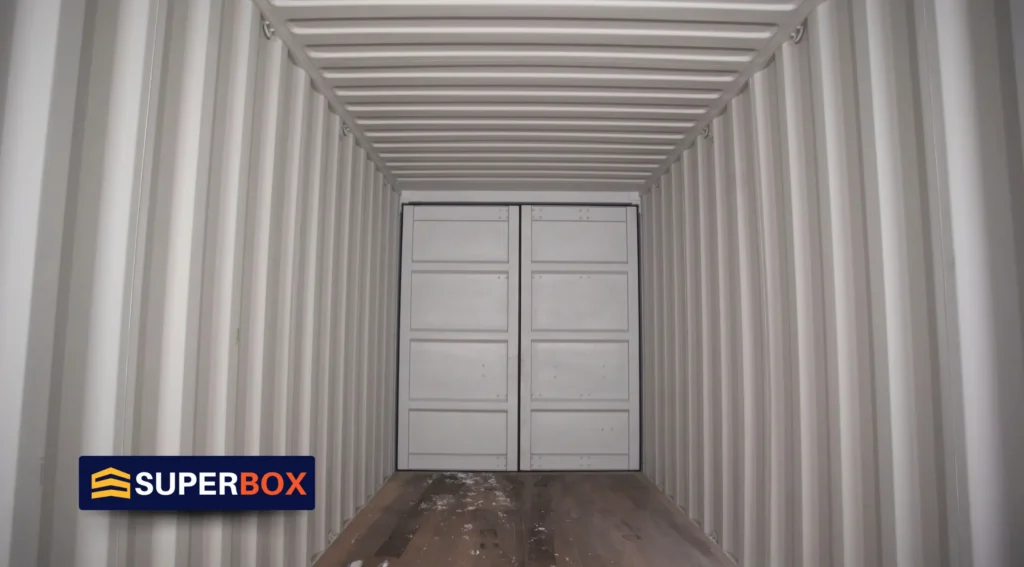
Dimensions and Weights
Understanding dimensions and weights is essential for selecting the right shipping container. Knowing the difference between gross weight and tare weight, and checking internal dimensions, ensures your cargo fits perfectly and travels safely.
Understanding Gross Weight vs. Tare Weight
When discussing shipping containers, two important terms are gross weight and tare weight:
- Gross Weight: This is the total weight of the container when it’s fully loaded, including both the container and the cargo inside it.
- Tare Weight: This is just the weight of the empty container itself, without any cargo.
Importance of Internal Dimensions
Check the internal dimensions of a container to make sure your cargo will fit. The internal dimensions are always a bit smaller than the external ones. So, when planning your shipment, make sure to measure your items and compare them to the internal space of the container. This helps avoid any surprises when loading.
Choosing Based on Dimensions and Weights
When picking a container, think about both the dimensions and weights. You need to ensure that the container can handle the size and weight of your cargo safely. If the container is too small or doesn’t support the weight, your cargo could be damaged during transport. By choosing a container that fits your cargo perfectly and meets weight limits, you ensure a smooth and safe shipping process.
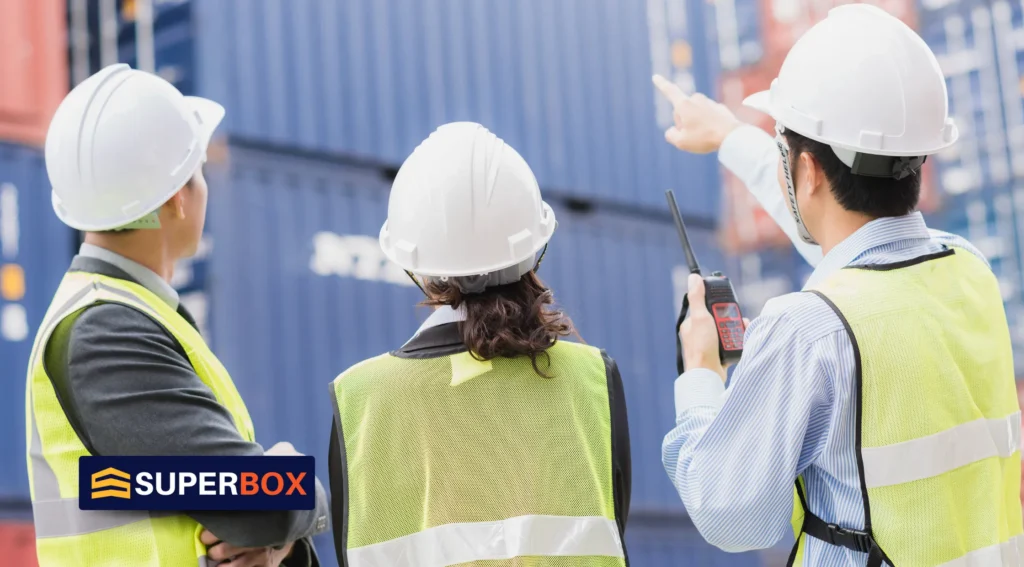
Choosing the Right Container
Selecting the right shipping container is key to safely transporting and storing your cargo. Whether you need a standard size or something more specialized, understanding your options ensures a perfect fit for your needs. Here’s how to choose the best container for your cargo.
Assessing Your Cargo Needs
Begin by determining the specifics of what you need to ship. If you have regular-sized items, a 20ft or 40ft container is usually enough. But if your items are larger or bulkier, you might need a high cube container, which gives you extra height, or specialty containers like open tops and flat racks that are designed for different types of cargo.
Comparing Different Container Types
Review the various container types to determine which best meets your requirements. Think about how tall your cargo is, how you need to access it, and how heavy it is. For example, open-top containers are ideal for loading things from above, while flat racks are better for large or heavy items that are loaded from the sides.
Ensuring Proper Fit and Safety
Make sure the container you choose is the right size for your cargo. It should fit your items comfortably and meet the weight limits. A well-fitting container keeps your cargo safe and reduces the chance of it getting damaged during transport. Always double-check the dimensions and weight limits to make sure everything will fit properly and travel safely.
Conclusion
Choosing the right shipping container means knowing the different sizes and types available. Containers come in standard sizes, high cube options, and specialty types like open tops and flat racks. The sizes include 20ft and 40ft, among others. ISO standards, set by the International Organization for Standardization, help ensure containers work well everywhere. By understanding these factors, you can pick the best container for your cargo, making transport safer and more efficient.
Choosing the Right Shipping Container: A Guide by SuperBox
Choosing the right shipping container is crucial for efficient transport and secure storage. At SuperBox, we provide a wide array of top-quality containers to meet all your needs. From standard 20ft and 40ft containers to high cubes and specialty types like open tops and flat racks, we have the perfect solution for every situation.
Our team is dedicated to helping you find the ideal container to fit your specific requirements. With SuperBox, you can trust that you’re getting a reliable product and excellent service. We pride ourselves on customer satisfaction and offer expert guidance to ensure you make the best choice.
Do not accept anything less than the highest quality. Contact us today at 1-866-696-9269 and let SuperBox help you with all your shipping container needs. Ensuring your satisfaction is our highest priority.


